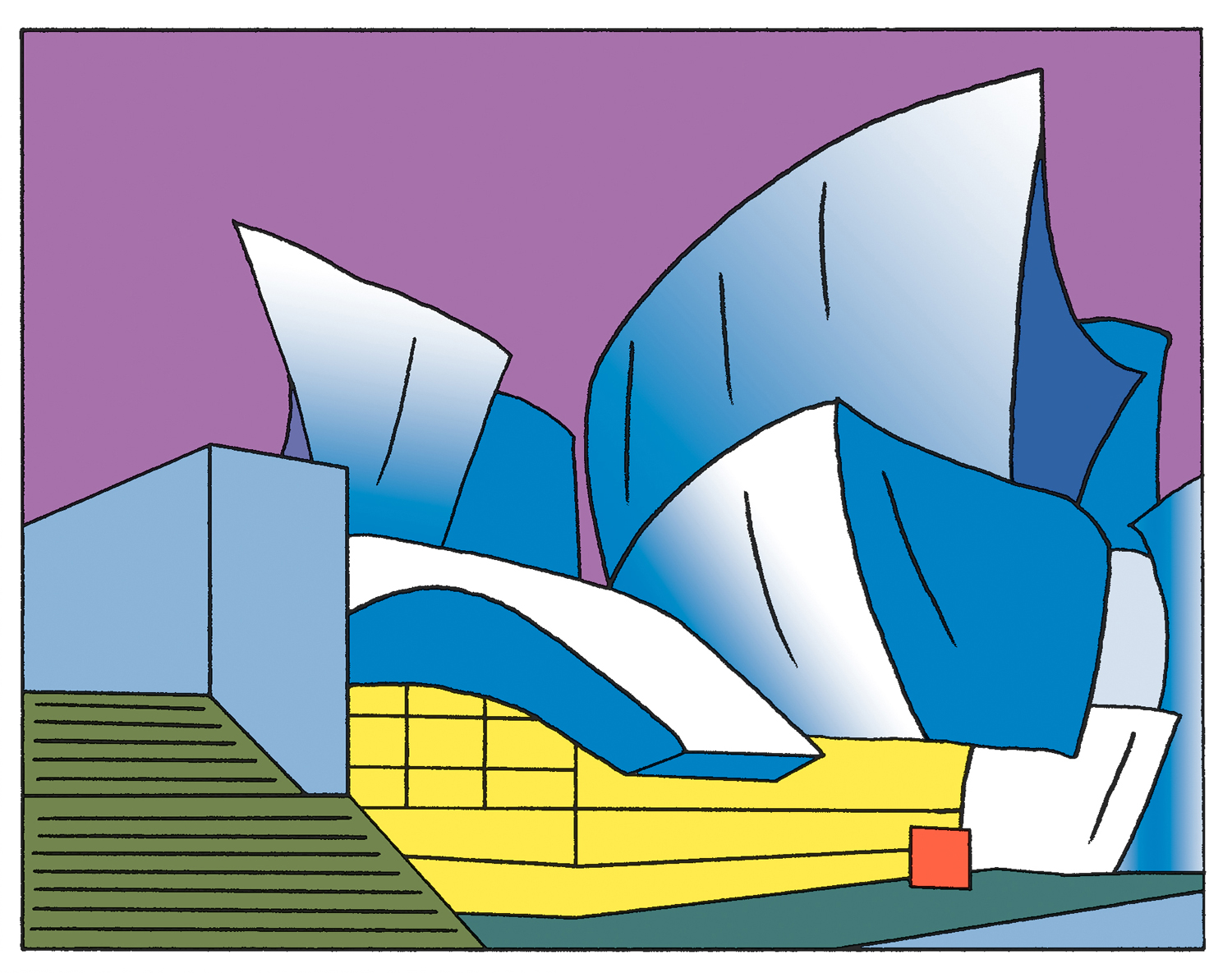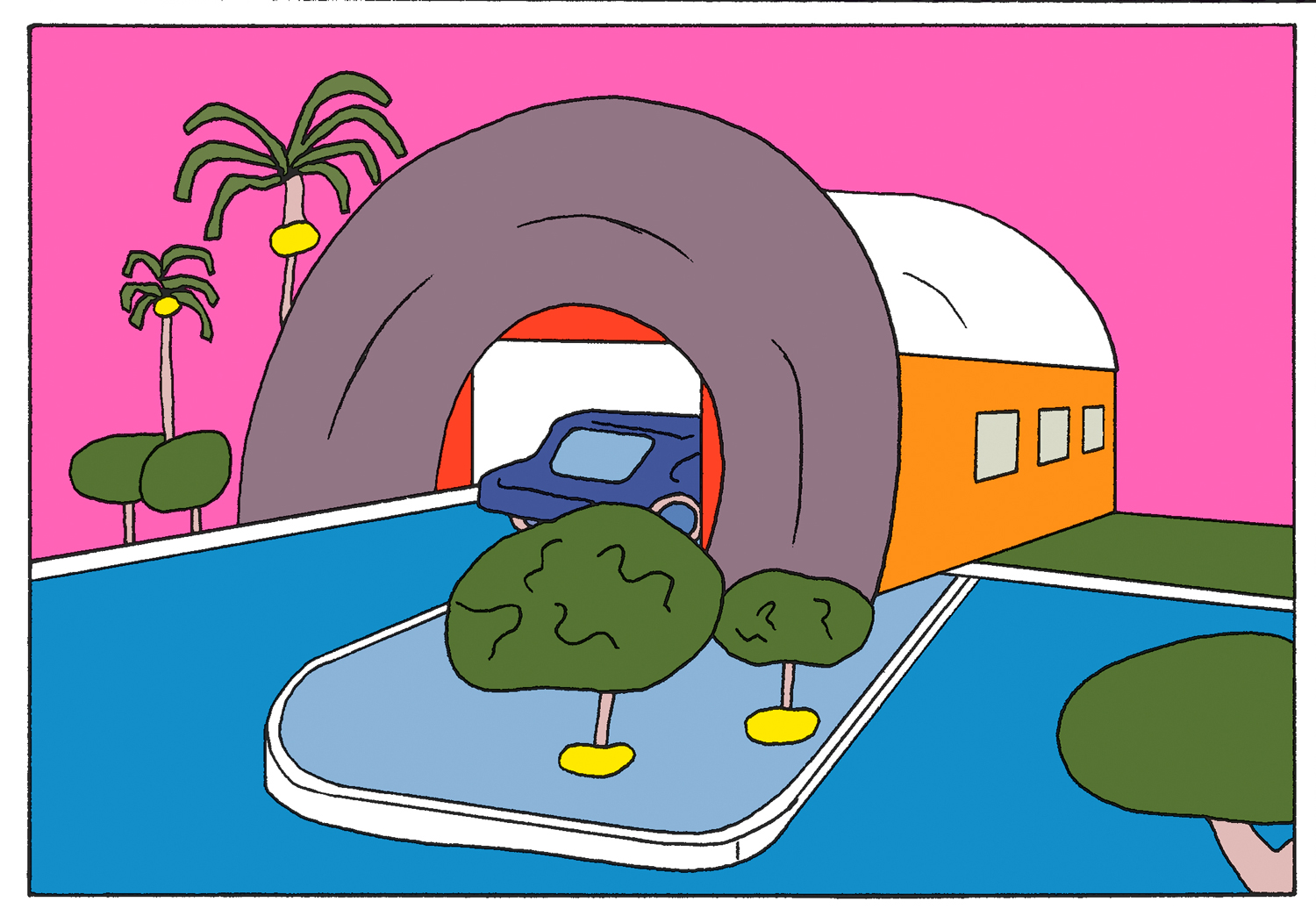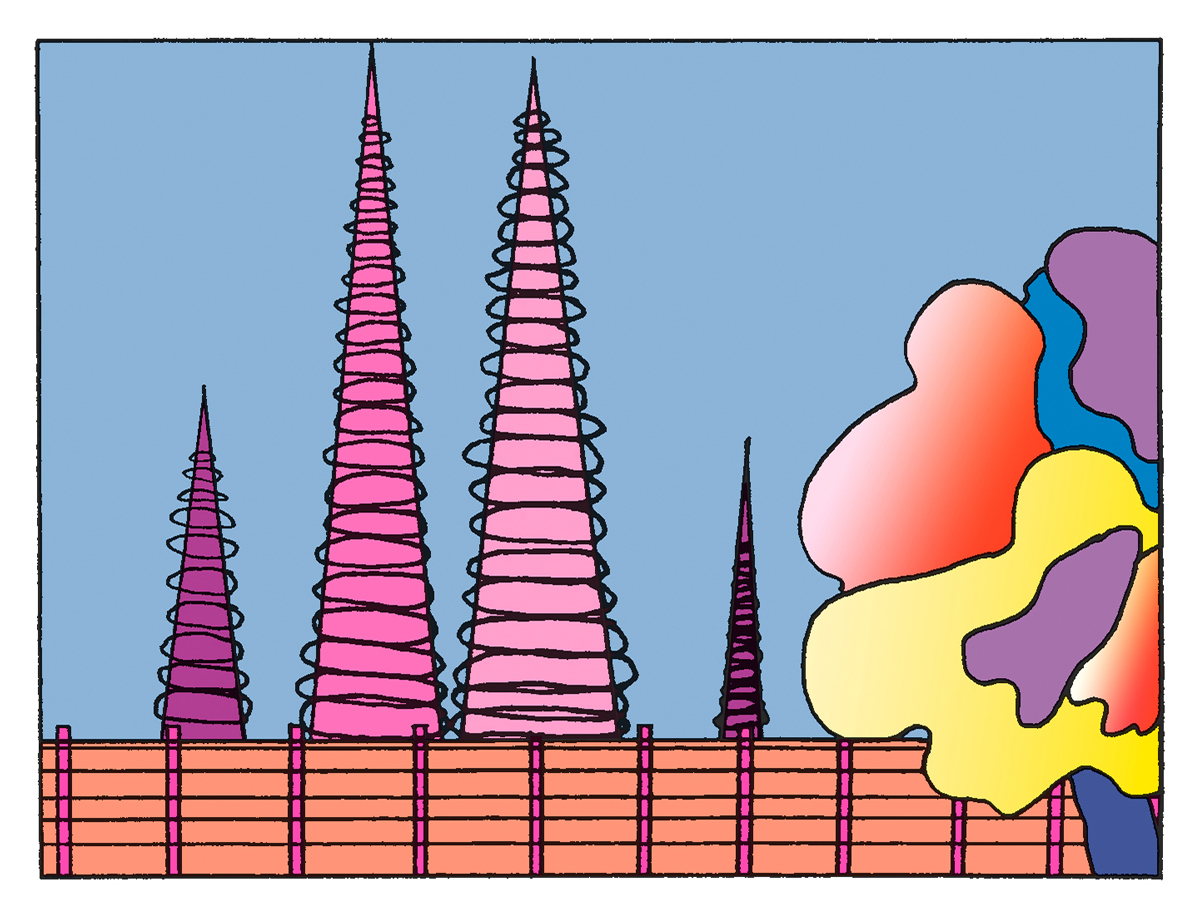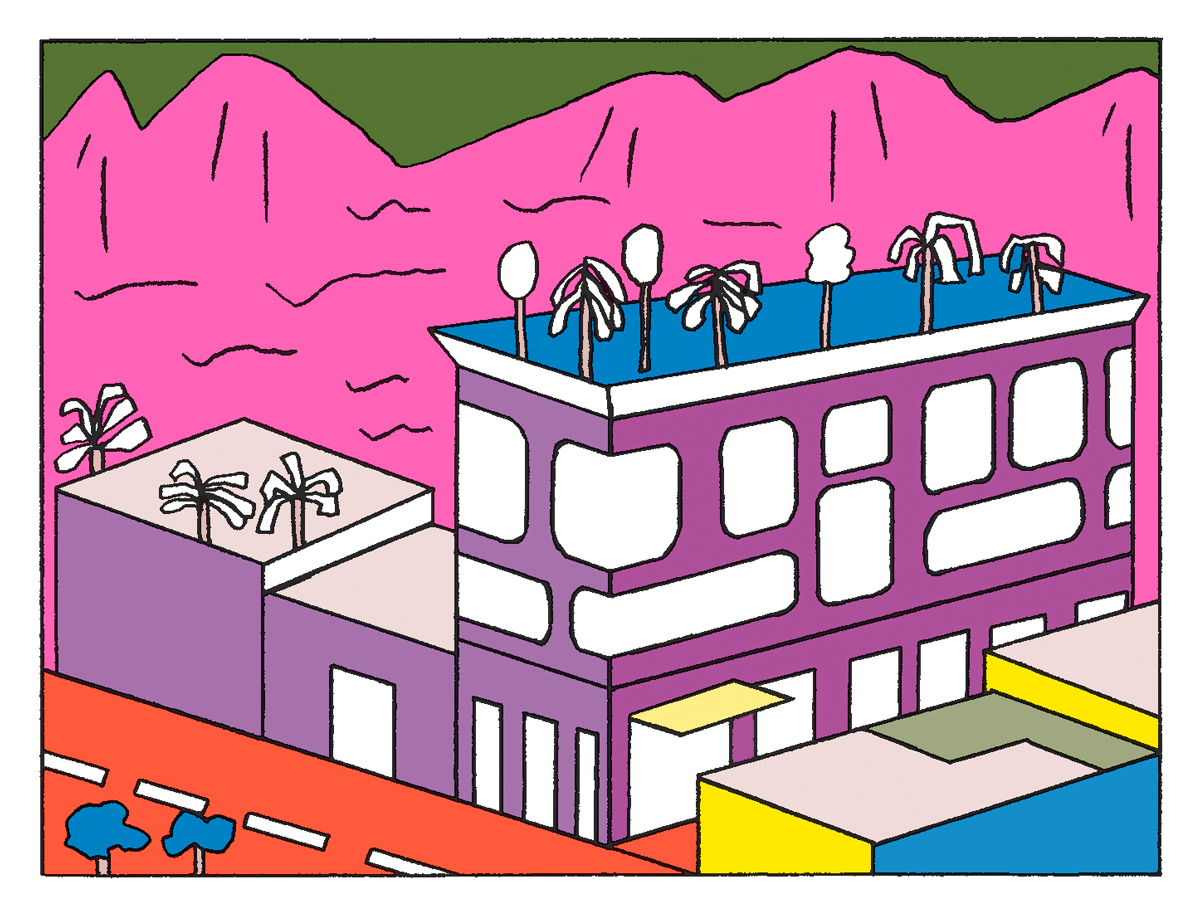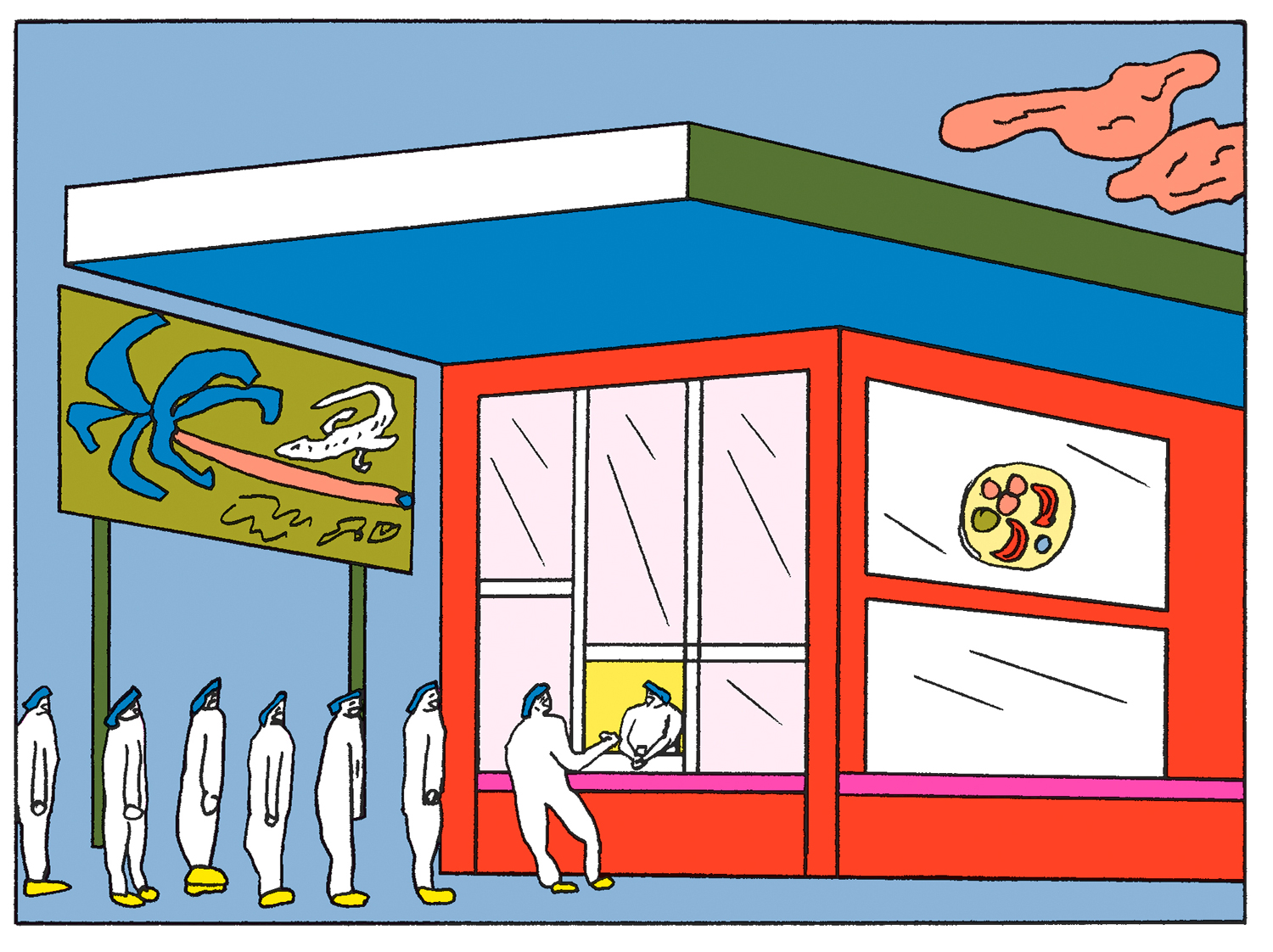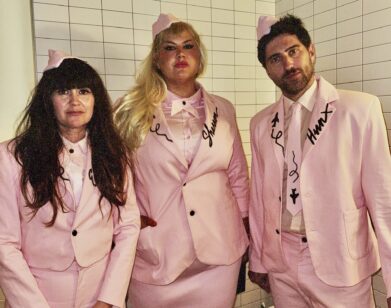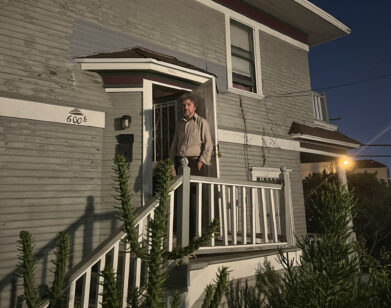Nine Architects (and Elvira) Rank L.A.’s Most Gloriously Ugly Buildings
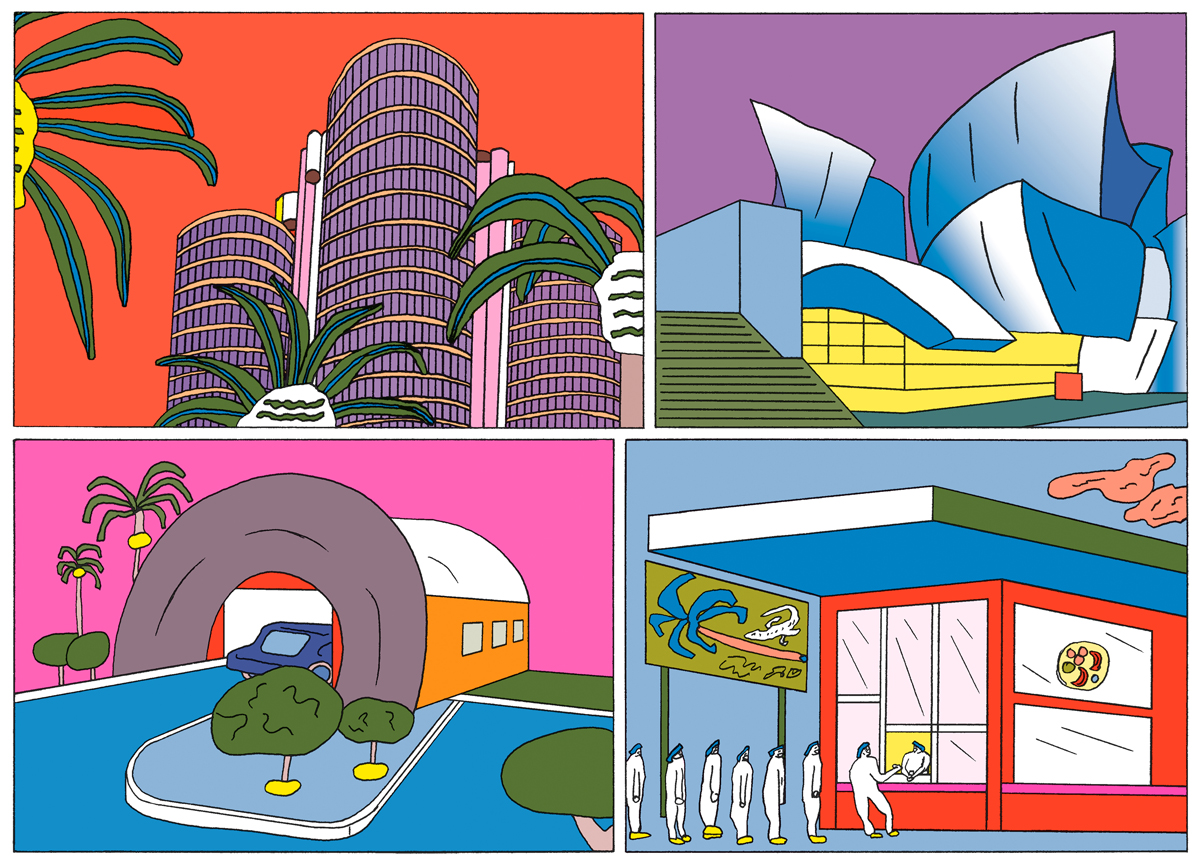
Only in Los Angeles can a street part the sea between colonial faux-villas and William Gibson-esque skyscrapers. In pursuit of the city’s most charming—read: most tragic—structures, we asked a few award-winning architects (and the world’s most famous mistress of the dark) to list the best of the worst.
———
THE BONAVENTURE HOTEL
MÓNICA PONCE DE LEÓN, architect and dean of the Princeton University School of Architecture
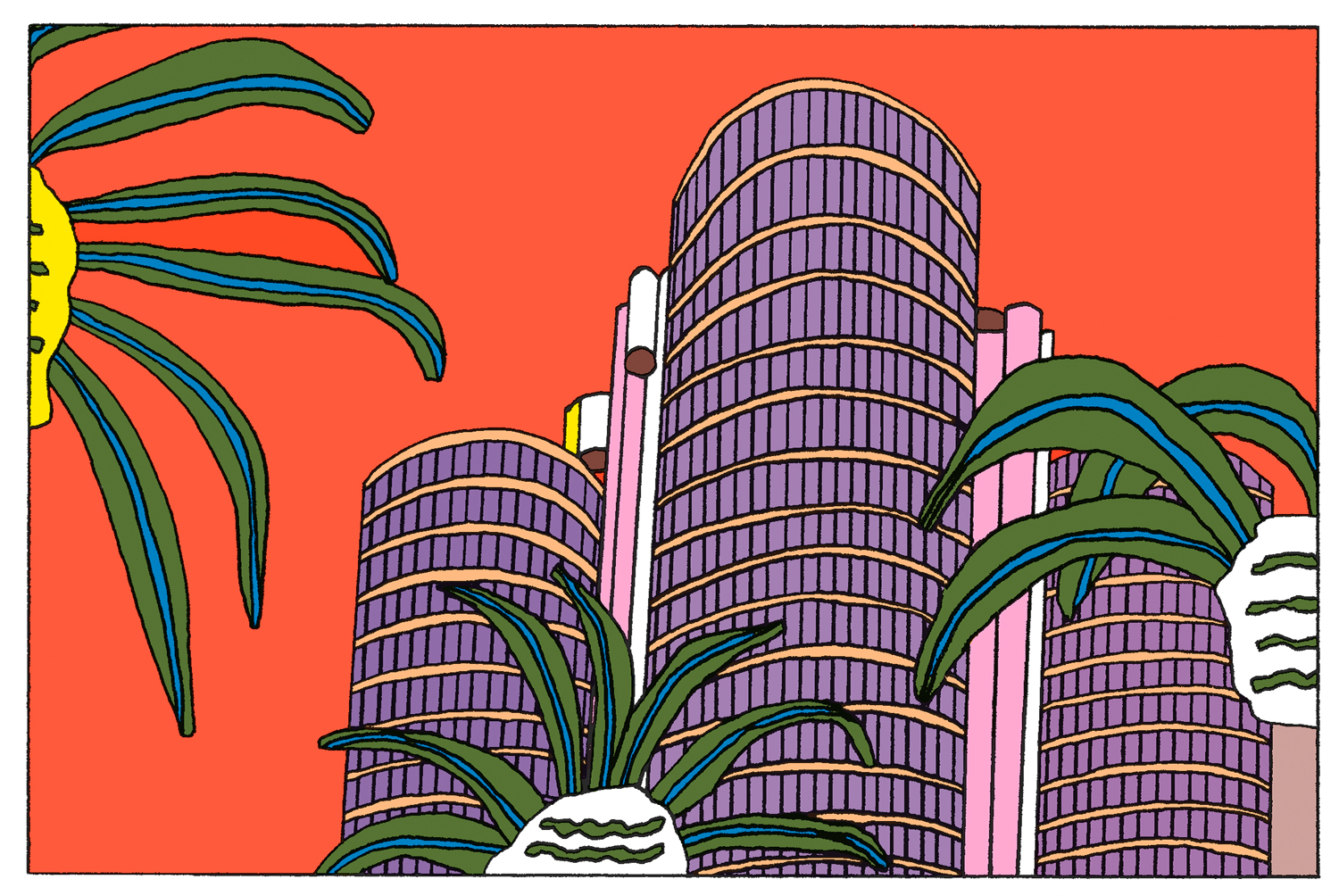
“The Westin Bonaventure Hotel by John Portman has been both beloved and hated since the ’70s. To me, it’s an amazing building that embodies invention in ways that few buildings in American history do: from the way its towers reflect the Los Angeles sun, to its wedge-shaped rooms, to the way it captures nature in its interior atrium. Some might consider it outright ugly, but it’s exciting when a building is not trying to be pretty.”
———
THE WALT DISNEY CONCERT HALL
ANDREW TYLEY, architect and partner at Rogers Stirk Harbour + Partners
“The drama, fluidity, and spectacle of this building truly represents Tinseltown and the idea of Los Angeles. The concert hall was built with new materials and used technology to create new forms in ways that previously couldn’t even be conceived—technologies that are cutting edge to this day. It really represents the spirit of Los Angeles where everybody wants to know about the latest thing. This building is about the aura of that spectacle.”
———
THE DONUT HOLE
SHOHEI SHIGEMATSU, architect and partner at OMA
“I think ugliness often represents an extremity of ambition that clean or hip architecture lacks. This donut drive-through was built in 1968, and I think it reflects the optimism of car culture and that vision of L.A. from the time it was built. The entrance and exit are two huge donuts, so you go in through one donut and come out through another. It’s such a programmatic building: It captures the cars into the donut it is selling.”
———
THE WATTS TOWERS
DENISE SCOTT BROWN, architect and critic
“Los Angeles is one of the most versatile places in the world, and it allows for so many conditions where tackiness can occur. Entire neighborhoods are capable of being tacky there, not just individual people or buildings. There are whole neighborhoods of tiny little farms, or houses that have five pools connected together, or areas filled with little courthouses that only have a handkerchief of lawn in front of each one. The Watts Towers by Simon Rodia and their surrounding area are representative of this. The towers are so entwined with all these little houses nearby, to the point where the person Simon was and the kind of people who lived in Watts went together.”
———
HOLLYWOOD DREAM SUITES
ELVIRA, actress and model
“Every day I drive past this building called the Hollywood Dream Suites, and it is the ugliest damn building. First of all, it’s from the ’70s, and they really should have put a moratorium on building anything in the ’70s, because that popcorn stucco is disgusting. The hotel is painted flamingo pink, and then it has all of these salmon and purple details on it, as well as Greek lettering and Greek statues and these columns with urns on them. It’s really amazing, because, as with my favorite movies, it takes sincerity to make something this horrible.”
———
LA PLAYITA
THOM MAYNE, architect and professor at SCI-Arc
“There’s a taco stand by my office called La Playita. It’s a shed on Lincoln Boulevard and it’s kind of hideous, but it’s a cultural institution. There must be tens of thousands of these little sheds all around Los Angeles. In L.A., there’s no center of gravity, no top-down deciding board, so it’s a free-for-all space. This arbitrariness makes the city what it is, and a structure like this embodies that ad hoc, mysterious, and aesthetically agnostic quality.”
———
ANY FAKE SPANISH, ITALIAN, OR FRENCH HOUSE
AXEL VERVOORDT, architect and interior designer
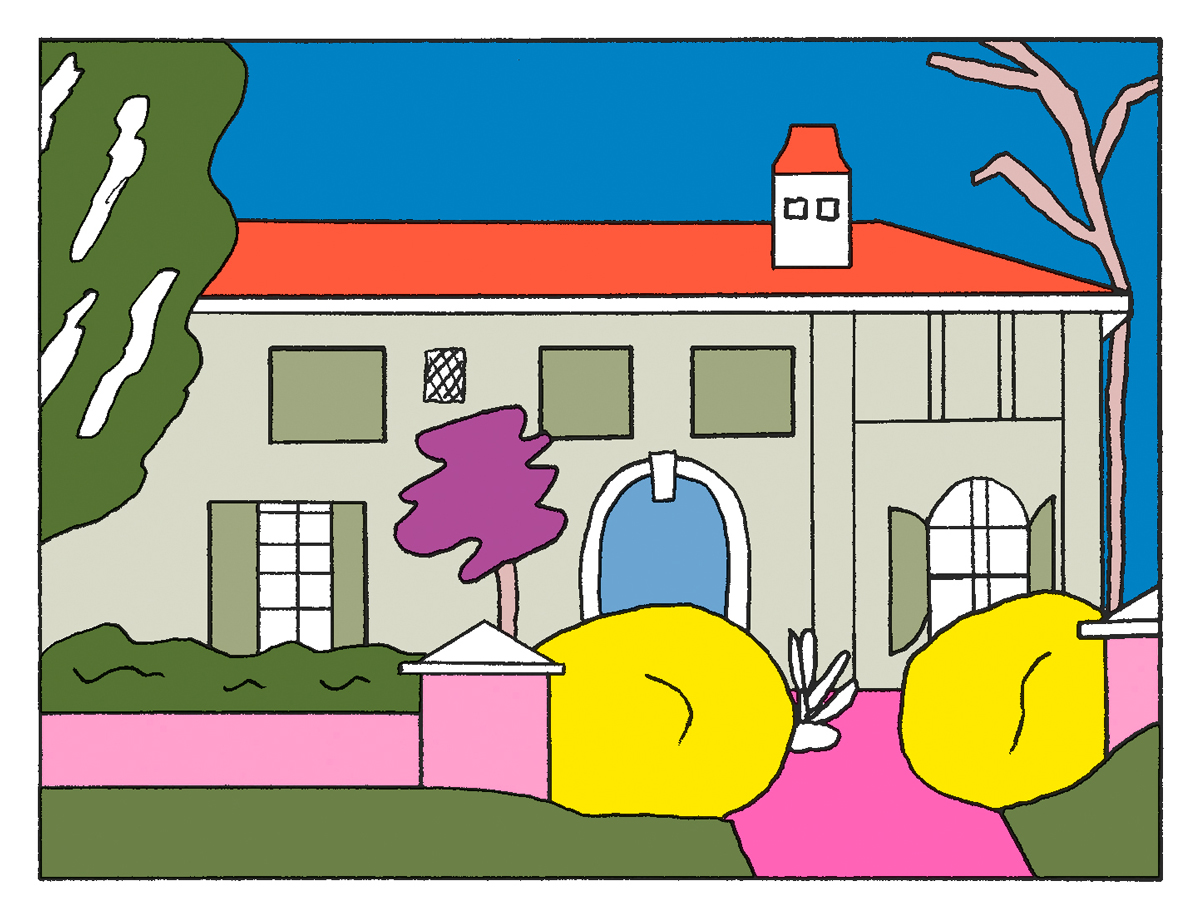
“Right now I’m working on houses in Calabasas, Malibu, and Santa Monica, and when I travel from client to client, every house I see is fake: fake Spanish, fake Italian, fake French. When I design places in L.A., I want to make things that attempt to travel back to this European origin and create a dimension where people feel both good and strange. I would like to restore the feeling of a European monastery in a contemporary way.”
———
THE SCHINDLER HOUSE
ERIC OWEN MOSS, architect and professor at SCI-Arc
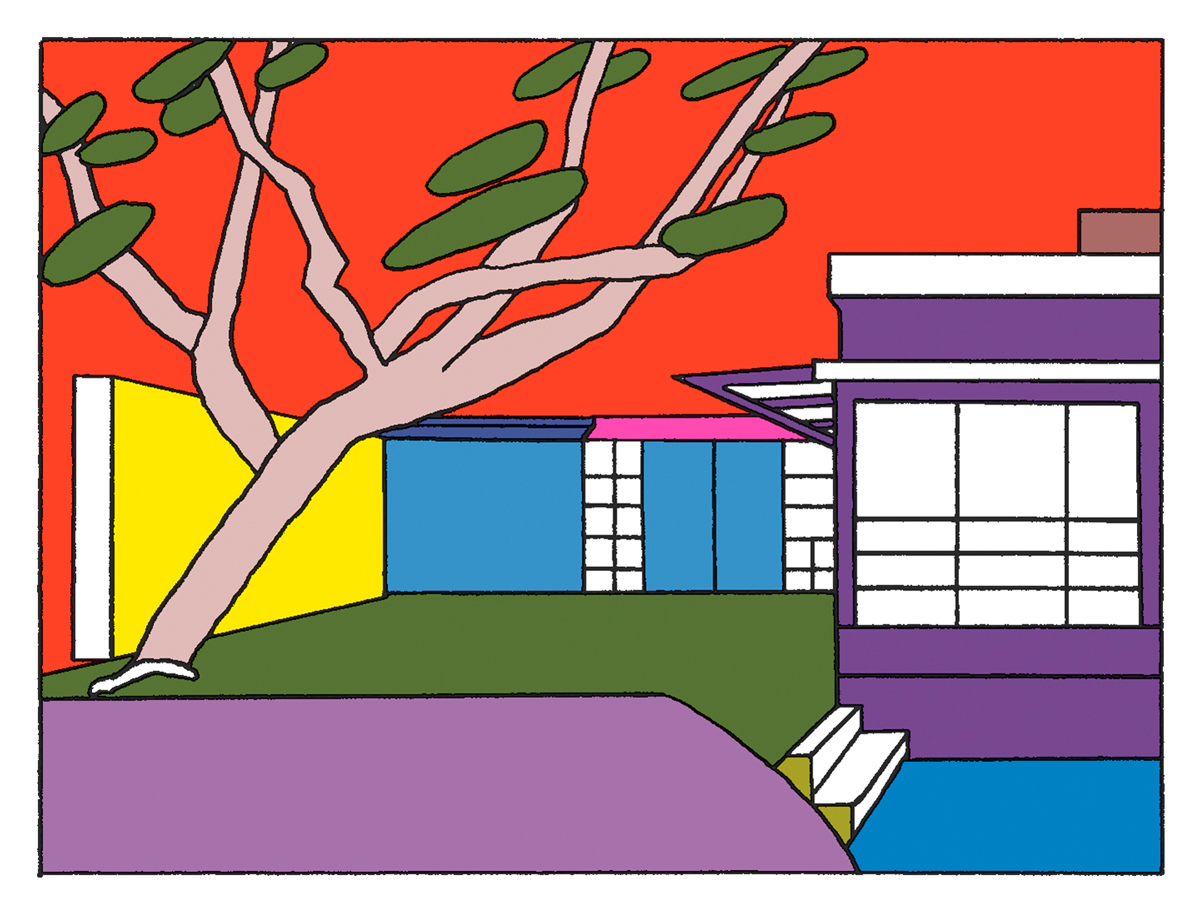
“The Schindler House by R.M. Schindler is very unique to this day. His work was a point of inspiration that came from Los Angeles, as opposed to coming from the outside in. At the time of building this house, he was a pariah and there was great animosity toward his work. But now the exception has become the rule. Houses in the style of Schindler can be bought from listings in the magazines outside Gelson’s or Whole Foods.”
———
THE TEAM DISNEY BUILDING
GREG LYNN, architect and professor at UCLA
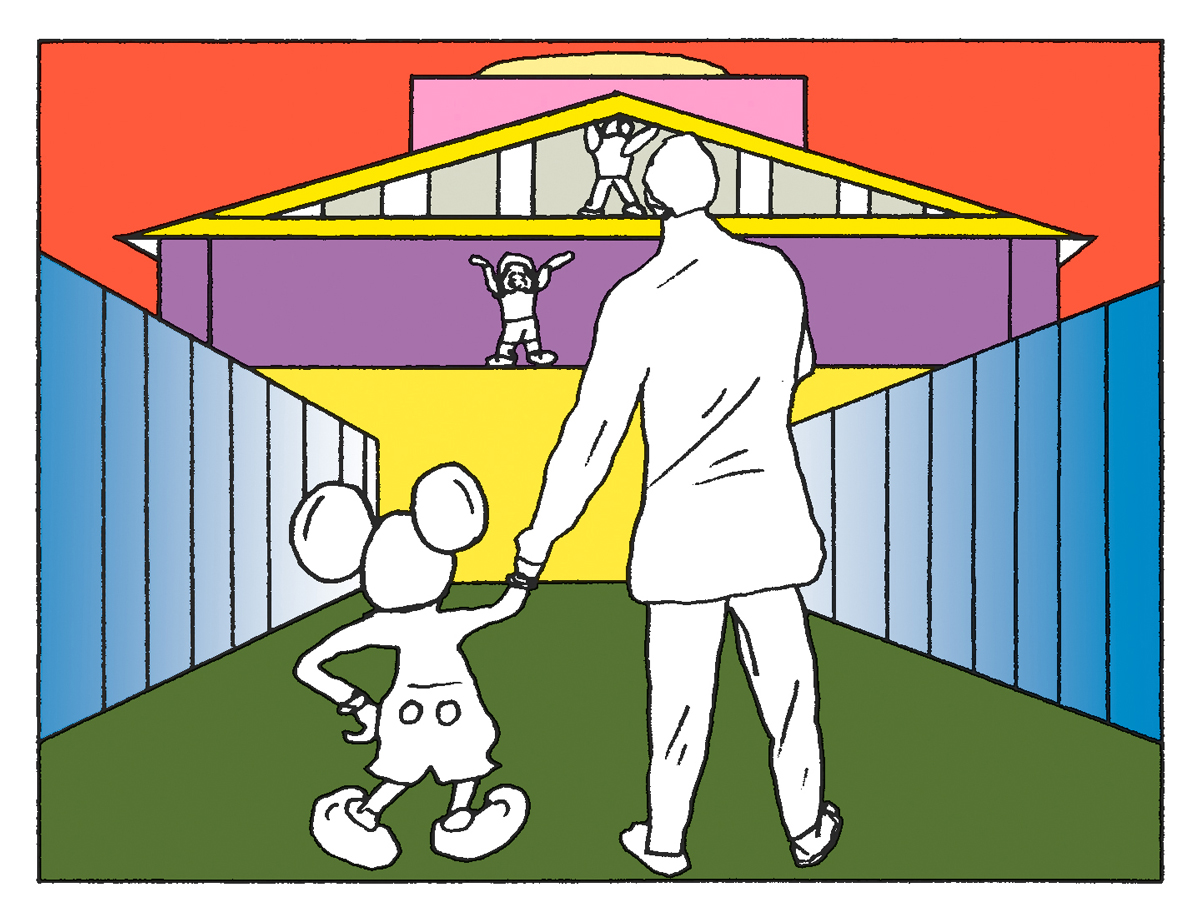
“A lot of people forget that the most important patron of contemporary architecture in the late ’80s and early ’90s was Disney under Michael Eisner—Arata Isozaki, and Frank Gehry, and Michael Graves all built for them, and Los Angeles was a beneficiary for a bunch of that. The Team Disney Building by Michael Graves is a monumental landmark that is oriented primarily toward the automobile, as opposed to a pedestrian thinking of the city. Its gnome columns which are totally tacky kitsch—are scaled and positioned to be seen from the freeway.”
———
THE ENNIS HOUSE
BERNARD TSCHUMI, architect and professor at Columbia University
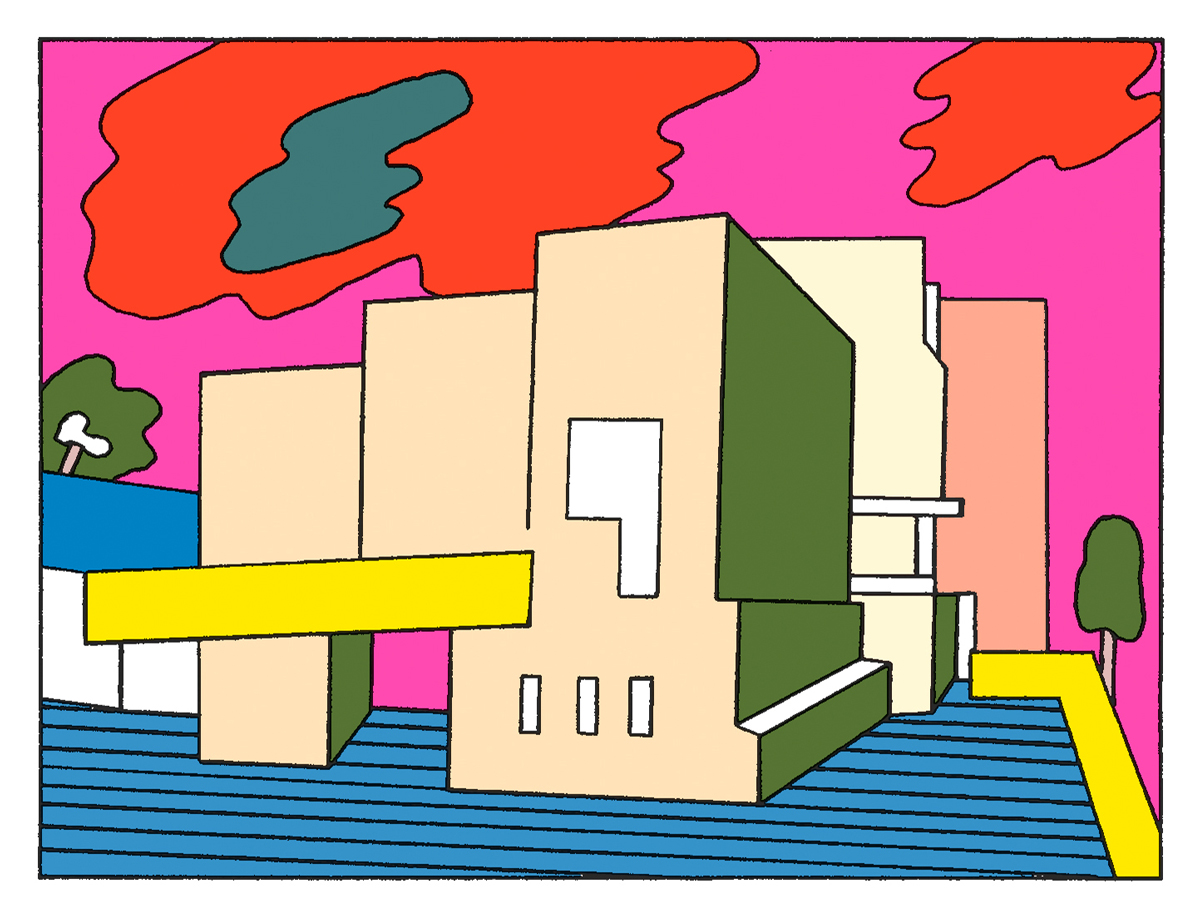
“The Ennis House by Frank Lloyd Wright is bizarre in that it fits nowhere in time. It seems contemporary today, but it seemed v very old when it was built. You don’t know whether it is located somewhere in Northern Europe, or Morocco, or Peru—and yet, you can’t quite tell if it’s a pastiche. Some parts of the building seem to have aged more than others, and you don’t know whether that was intended or if it’s because of pollution. In other words, it already looks like a ruin. Something this timeless and placeless could not have been built anywhere other than Los Angeles.”

